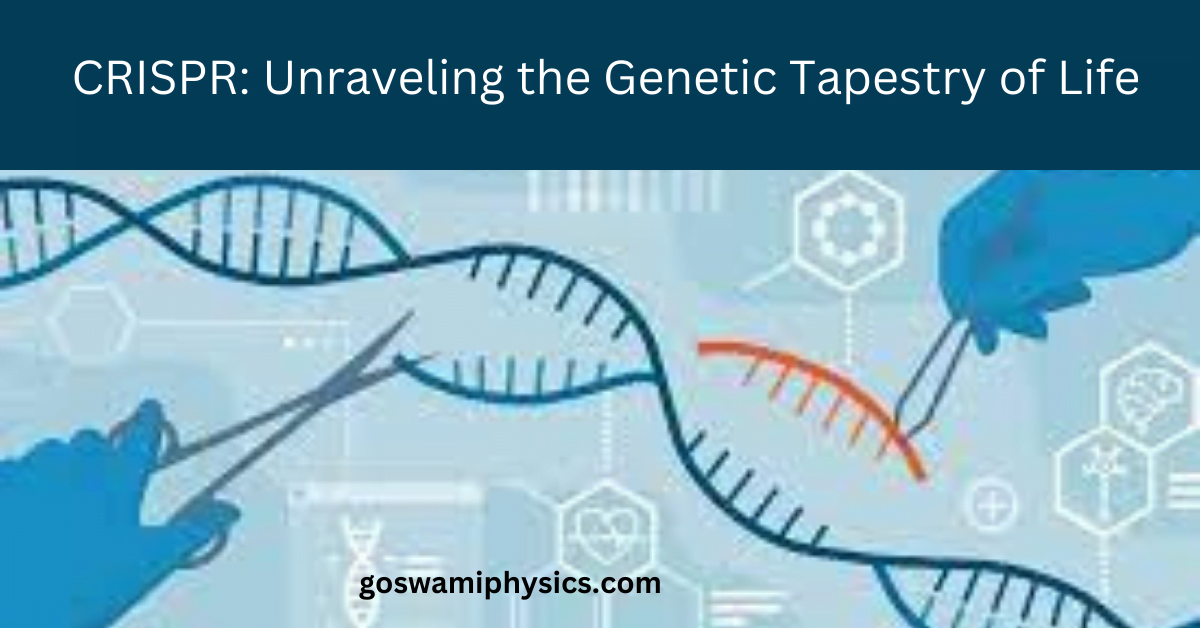In of molecular biology and genetics, one revolutionary technology has captured the imagination of scientists and the public alike: CRISPR. Standing for Clustered Regularly Interspaced Short Palindromic Repeats, CRISPR is a cutting-edge tool that allows researchers to selectively modify genes within an organism.
In this blog article, we will delve into the intricacies of CRISPR, exploring its origins, mechanisms, applications, and the ethical considerations that accompany this groundbreaking technology.
The CRISPR System: Nature’s Defense Mechanism
The story of CRISPR begins in the microbial world, where bacteria and archaea employ this system as a defense mechanism against viral invasions.
The basic components of the CRISPR system include short, repeating DNA sequences (the “palindromic repeats”) and unique DNA sequences derived from past invaders. These unique sequences, known as “spacers,” act as a molecular memory bank, allowing the organism to recognize and mount a defense against specific viruses in the future.
Molecular Scissors: Cas Proteins and CRISPR-Cas9
At the heart of the CRISPR system is the Cas9 protein, an enzyme that acts like a pair of molecular scissors. The process begins with the design of a short RNA sequence that matches the target gene.
When combined with the Cas9 protein, this RNA sequence guides the molecular scissors to the precise location on the DNA where a cut is desired. Once the DNA is cut, the cell’s repair machinery kicks in, introducing changes or mutations to the gene.
Applications of CRISPR Technology
1. Gene Therapy
CRISPR has opened up new frontiers in the field of medicine, particularly in the realm of gene therapy. Researchers are exploring the potential of CRISPR to treat genetic disorders by correcting or replacing faulty genes. Diseases with a known genetic basis, such as cystic fibrosis or sickle cell anemia, could be targeted and treated at the root of the problem.
2. Agricultural Advancements
In agriculture, CRISPR technology is being used to engineer crops with desirable traits, such as improved resistance to pests or tolerance to environmental stress. This has the potential to enhance crop yields, reduce dependency on chemical pesticides, and contribute to global food security.
3. Functional Genomics
CRISPR has become an invaluable tool in functional genomics research, allowing scientists to systematically study the function of specific genes.
Researchers can uncover the roles these genes play in various biological processes by selectively “knocking out” or modifying genes in laboratory organisms.
Ethical Considerations: Editing the Code of Life
While the potential benefits of CRISPR are vast, the technology also raises important ethical considerations. One of the most significant debates revolves around the editing of the human germline – the DNA that can be passed on to future generations
Editing the germline has the potential to eradicate genetic diseases from entire family lines, but it also opens the door to questions of unintended consequences and the ethical implications of “designer babies.”
The ethical discourse extends to environmental concerns as well. The release of genetically modified organisms into the environment could have unpredictable consequences on ecosystems. Striking the right balance between scientific progress and ethical responsibility is a challenge that scientists, policymakers, and society at large must grapple with.
CRISPR in the Headlines: Successes and Challenges
In recent years, CRISPR has made headlines for both its successes and challenges. Successful applications include the editing of genes in animals to study disease mechanisms, the development of potential treatments for genetic disorders, and the creation of genetically modified organisms with enhanced traits.
However, challenges persist. Off-target effects, where CRISPR makes unintended edits to the genome, are a significant concern. Researchers are actively working to improve the precision of CRISPR technology to minimize these off-target effects and enhance its safety and reliability.
The Future of CRISPR: What Lies Ahead?
As the CRISPR field evolves, scientists are exploring new frontiers and refining the technology. CRISPR-Cas systems beyond Cas9 are being discovered, each with its unique features and potential applications.
Researchers are also developing novel CRISPR-based techniques, such as base editing and prime editing, which offer even greater precision in gene editing.
The future may see CRISPR being employed in the treatment of a broader range of diseases, the development of customized agricultural solutions tailored to specific regions, and advancements in our understanding of fundamental biological processes.
Conclusion
CRISPR stands as a testament to the incredible progress that science and technology have made in unraveling the mysteries of the genetic code. Its potential to transform medicine, agriculture, and our understanding of life is immense. However, with great power comes great responsibility, and the ethical considerations surrounding CRISPR underscore the need for careful and thoughtful application of this powerful tool.
As CRISPR research marches forward, scientists, ethicists, policymakers, and the public need to engage in open and informed discussions to ensure that the benefits of CRISPR are harnessed responsibly and ethically.
In navigating the uncharted territories of genetic manipulation, humanity stands at the crossroads of incredible promise and profound ethical challenges, and the choices we make today will shape the genetic landscape of tomorrow.












